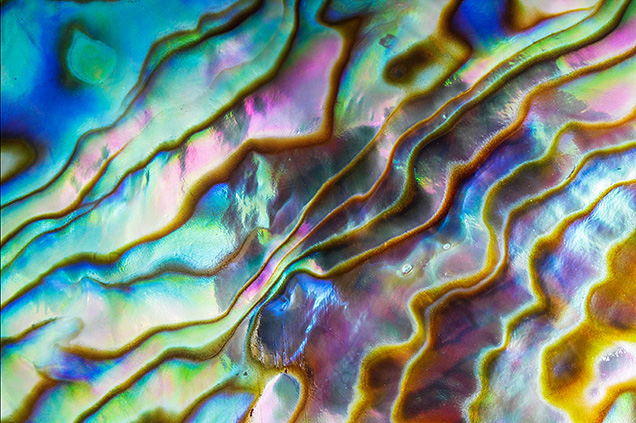Iridescent Abalone Shell

The glowing rainbow-colored image resembling a topographic map in the figure above was captured over the polished surface of an abalone shell. Abalone is a common marine gastropod (univalve mollusk) belonging to the family Haliotidae and the genus Haliotis. Abalone mollusks are distributed along coastal waters worldwide and associated with rocky habitats. They are well known as nutrition-rich seafood, and their ear-shaped shells are also popular in jewelry owing to their uniquely vibrant iridescent nacre known as mother-of-pearl.
Iridescence is an optical phenomenon frequently observed in gem materials, as well as in nacreous shells and pearls. Orient is the specific term for the iridescent effects attributed to interference and diffraction of light in the multilayered aragonite platelet structure. Shells and pearls produced by the Haliotis species generate the highest degree of iridescence, with a full range of distinct rainbow colors. These colors are caused by the fine grating structure created by the thin and closely packed nacre layers, similar to that of a diffraction grating (T.L. Tan et al., “Iridescent colours of the abalone shell (Haliotis glabra),” Journal of Gemmology, Vol. 29, No. 7/8, 2005, pp. 395–399). This extraordinary property lends a charming appearance to shell, pearl, and assembled cultured blister “pearls” (mabe) produced by abalone mollusks and makes them widely popular in the gem and jewelry industry.



